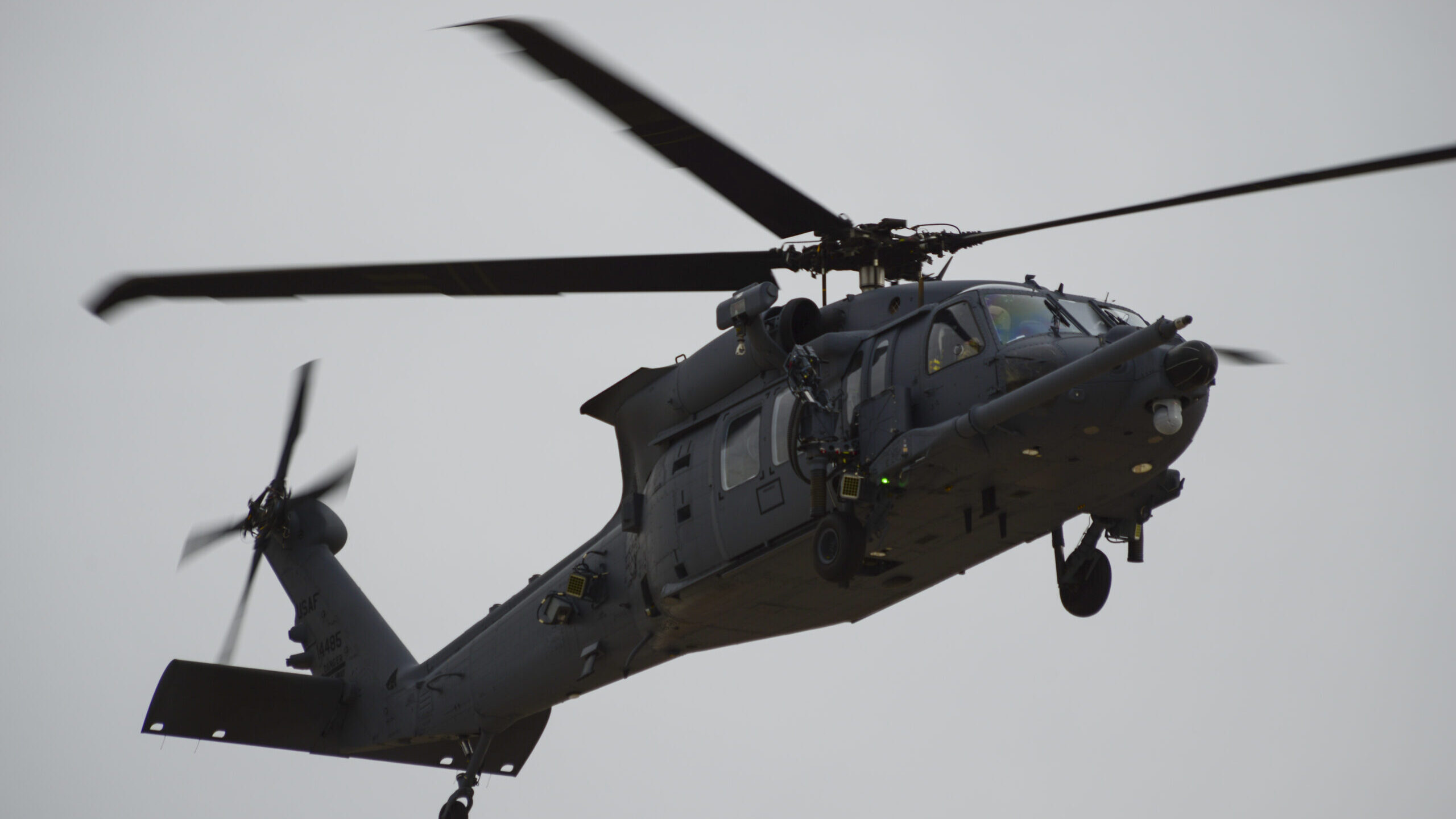
The HH-60W Jolly Green II arrives at the 58th Special Operations Wing at Kirtland Air Force Base, New Mexico, Dec. 17, 2020. (Staff Sgt. Enrique Barcelo/ Air Force)
WASHINGTON — The Air Force announced huge cuts to the F-15EX and HH-60W Jolly Green II programs this year, but neither of those efforts is headed for a “critical” cost overrun that would trigger the programs to be rebaselined or canceled, the service confirmed to Breaking Defense.
On June 28, the Air Force reported a “significant Nunn-McCurdy breach” for the HH-60W combat rescue helicopter after program acquisition unit costs for the HH-60W increased by 19 percent when compared to the current program baseline, exceeding the 15 percent threshold, Air Force Materiel Command spokesman Brian Brackens said in response to emailed questions.
The breach was primarily driven by a reduction to the HH-60W program in the fiscal 2023 budget, when the Air Force announced it would cap its buy of the Lockheed Martin-made helicopter at 75 units instead of buying 113 HH-60Ws as originally planned — meaning the total cost of developing the aircraft was spread over far fewer air frames.
However, because the Nunn-McCurdy breach was not “critical” — where the price-per-unit has exceeded the current program baseline by more than 25 percent — the Defense Department does not have to decide whether to cancel the program or to create a new cost and schedule baseline.
“A significant Nunn McCurdy breach for programs whose cost growth is due primarily to a strategic decision to change the number of items purchased does not terminate the previous milestone,” Brackens said. “Therefore, this breach on HH-60W does not require … [a] program restructure and does not require congressional enactment of the program termination statue.”
The other major aircraft program that was truncated this year — Boeing’s F-15EX fighter — is not expected to undergo a Nunn-McCurdy breach at all despite a planned cut in the program of record from 144 to 80 aircraft, Brackens added. Generally major cuts to programs can trigger Nunn-McCurdy breaches considering the unit cost changes usually associated with drastic moves.
But the Air Force did not provide an explanation for why the cuts to the F-15EX program of record didn’t trigger a breach. However, much of the new technology in the F-15EX derives from foreign versions of the F-15, like Saudi Arabia’s F-15SA and Qatar’s F-15QA. That means that the US Air Force could rely on foreign investments into the platform to cover much of the F-15EX’s development costs.
During the Air Force’s Life Cycle Industry Days conference in August, Agnes Serenko, HH-60W program manager, confirmed to reporters that the program was heading for a Nunn McCurdy breach but was not immediately able to quantify ibncrease in cost or the seriousness of the breach.
The Air Force made the call to cut the HH-60W program due to concerns about the aircraft’s ability to conduct the personnel recovery mission in the Asia-Pacific, because of the helicopter’s perceived lack of survivability against near-peer threats like China.
“The scenarios that we’re most worried about are not the same as they once were,” Air Force Secretary Frank Kendall told reporters in March ahead of the budget release. “When we were doing counterinsurgencies, and we were losing pilots in those kinds of situations, the needs were different. The acts of aggression like we’re seeing in Europe, or we might see the Pacific … put us in a very different scenario.”
The Air Force is “in exploration mode right now,” looking at a range of concepts that would allow the Air Force to do the personnel recovery mission, including unmanned and high-speed aircraft capable of landing vertically, Ed Stanhouse, deputy program executive officer for intelligence, surveillance and reconnaissance and special operations forces, said during the LCID conference.
“What’s the next generation CV-22?” he said during the Aug. 10 roundtable, referring to the sometimes troubled rotorcraft. The service is also looking for “something that can keep up with a fighter aircraft. Helicopters don’t do that very well. We tend to tend to drag them down.”
Navy jet trainer fleet operations remain paused after engine mishap
One week after the incident, a Navy spokesperson says the service is continuing to assess the fleet’s ability to safely resume flight.


























